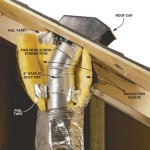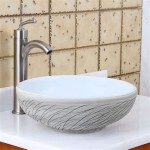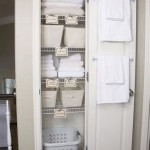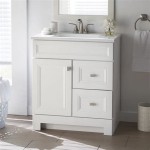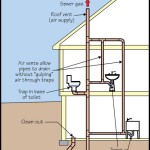Essential Aspects of Bathroom Vanity Drain Connection
The bathroom vanity drain connection is a critical component of any bathroom, ensuring the proper drainage of water from the sink. Understanding the essential aspects of this connection is crucial to avoid leaks, clogs, and other plumbing issues. This article explores the key factors to consider when connecting a bathroom vanity drain, providing homeowners and professionals with valuable guidance.
Types of Drain Connections
Bathroom vanity drains come in two primary types: pop-up drains and lift-and-turn drains. Pop-up drains feature a stopper that can be pressed down to close the drain or lifted to open it. Lift-and-turn drains require you to lift the drain stopper and then turn it to open or close the drain.
Drain Sizes and Compatibility
It is crucial to match the size of the drain opening on the vanity to the size of the drainpipe. Common drain sizes include 1 1/4 inches and 1 1/2 inches. Additionally, the drainpipe must be compatible with the type of material used in the vanity, such as PVC, ABS, or copper.
P-Trap Installation
A P-trap is a U-shaped pipe that helps prevent sewer gases from entering the bathroom. It should be installed directly below the drainpipe to create a water seal. The P-trap should be properly aligned and secured to ensure optimal drainage.
Drainpipe Connection
The drainpipe connects the P-trap to the main drain line. It should be sloped slightly downward to allow water to flow freely. The connection should be sealed with plumbers' putty or a flange to prevent leaks. It is important to use a pipe that is the correct size and material for the application.
Stopper and Linkage
The drain stopper connects to the drain assembly and allows you to control water flow. It is important to ensure that the stopper fits snugly in the drain opening and that the linkage is properly adjusted. A loose or damaged linkage can cause the drain to leak or become difficult to operate.
Maintenance and Repair
Regular maintenance and repair can prevent issues with bathroom vanity drain connections. Cleaning the drain to remove hair and debris can help prevent clogs. If you encounter a leak, check the connections and tighten any loose nuts or bolts. For more complex repairs, it is recommended to consult a qualified plumber.
Conclusion
Understanding the essential aspects of bathroom vanity drain connection is essential for ensuring proper drainage and avoiding plumbing problems. By considering the type of drain connection, drain size and compatibility, P-trap installation, drainpipe connection, stopper and linkage, and maintenance, homeowners and professionals can ensure a well-functioning and leak-free bathroom vanity drain system.
How To Install Bathroom Sink Drain Queen Bee Of Honey Dos

Bathroom Sink Plumbing Installation Diy Montreal

How To Plumb A Bathroom With Multiple Plumbing Diagrams Hammerpedia

Drop The Bathroom Sink Into Vanity Countertop Rona

How To Connect A Bathroom Sink Drain

Bathroom Sink Plumbing Installation Diy Montreal

How To Install A Vessel Sink Faucet

How To Easily Connect The Plumbing For A New Bathroom Sink Hometips

Plumbing New Vanity Sink Won T Drain Completely Home Improvement Stack Exchange

How To Connect Drain Pipes For A Dual Sink Bathroom Vanity Doityourself Com Community Forums
Related Posts
